Vintage bulldozer enthusiasts in Gisborne


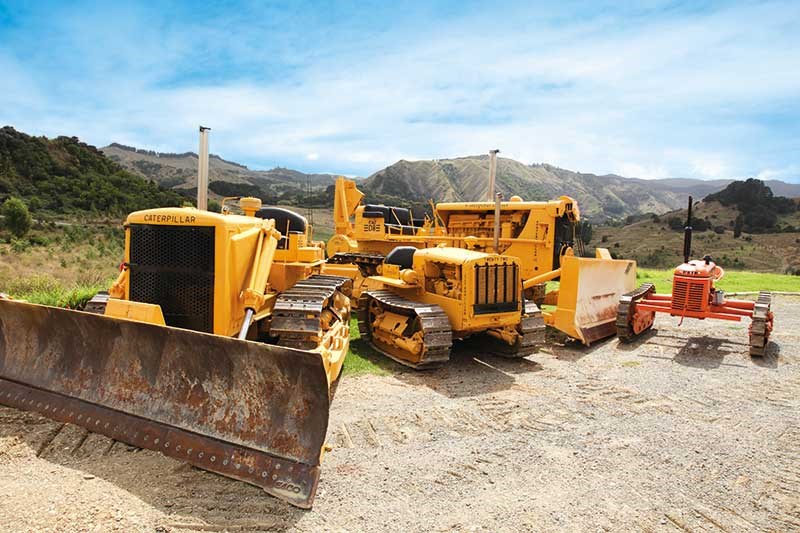

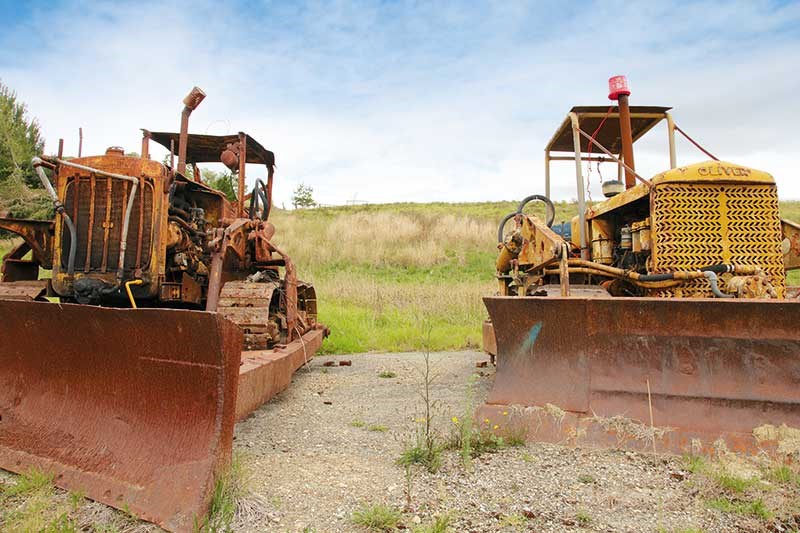

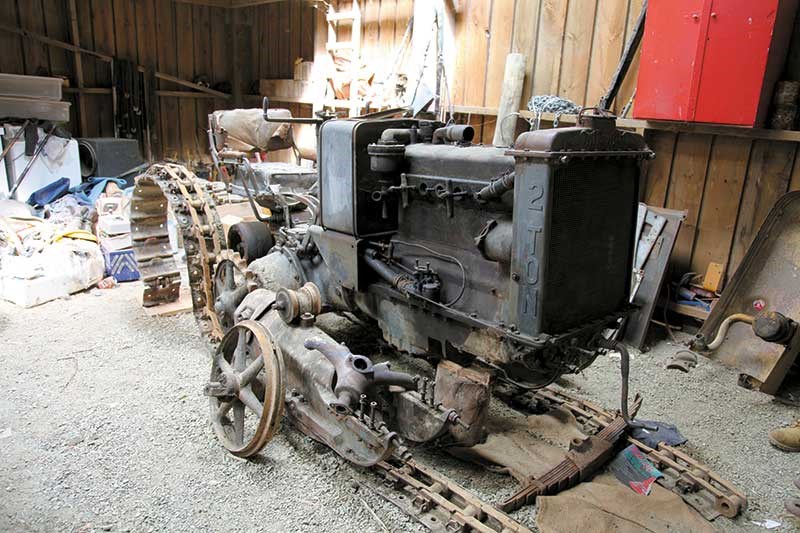


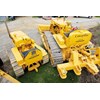

|

|

|

|

|
The stories that surround the history of old machinery are just as interesting as how they’ve been resurrected. Deals on Wheels spoke to Gisborne vintage bulldozer enthusiasts, Sheldon and Daniel Drummond, to find out what the attraction is.
Sheldon Drummond is so keen on vintage bulldozers that when he got married last year, yep, you guessed it, his ‘favourite old girls’ – a D82U, a D6 9U and a Cat 22 – were part of the ceremony.
Sheldon is a quietly spoken fellow, but his bubbly wife Tina let it slip that when they were courting, he sent her a photo of his truck with two little Oliver bulldozers on the back. She laughs at this memory. ‘Just checking that you like machinery as much as I do,’ seemed to be the underlying message.
No worries there. Tina is now equally as hooked as her husband and whenever they are out on the road she keeps an eagle-eye out for old bulldozers tucked away in the scrub.
Sheldon, who is general manager, forests for Juken New Zealand Ltd, has been in forestry all his working life. "I came into forestry during the last years of native logging in the 1970s in the East Coast and Minginui and so I know these bulldozers well, but it’s surprising how few of them are left and that’s why I collect them.
"Dan, his son, has his own earthmoving business and is just as enthusiastic to build the collection of mint old machines. Dan has been nestled into the cabs of dozers and diggers since he was barely walking, helping Dad to build things around the farm and forests. The scrap guys have mostly taken these old tractors. They see big tonnes of metal in a paddock and want to cut them up and take them away. Some people say, "You are freaking mad. What are you doing collecting those old heaps?"
But having a yard full of ancient machinery is not what he’s about. "Dan and I promised ourselves we would never fill the paddock up with junk and that we’d only collect what we could fully restore."
The Drummonds currently own 20-odd bulldozers, 12 of which are fully or nearly restored.
So far Dan and Sheldon have restored their Cat two-tonne, two Cat 22s, a D6 9U, a Cat D7 3T, a D7 17A, two Cat D8 2Us, a Wakefield Grader, an Oliver OC3 and an Oliver HGDD.
Sheldon’s interest in vintage machinery began when he was 18. While still at high school he worked on a 1928 Rio truck.
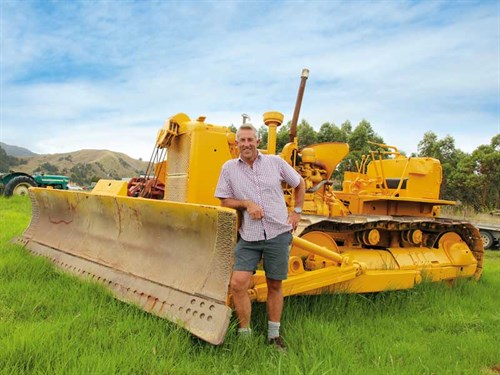
Now his son Dan has caught the bug.
"A few years back, Dan deposited a Cat 212 grader at the top of my driveway. It was a rusty old hulk with flat tyres. I asked him: ‘what’s that old pile of sh**?’ He said, ‘Oh, well Dad, I saw it in Auckland and thought I might do it up.’ So now the two of us work on them together. It’s a father/son thing."
For the past 18 months he and Dan have been working to retrieve a 1940s Cat D7 3T, from the Motu, in the Bay of Plenty, where it’s been languishing in the bush for the past 20 years.
"We made a lot of extra parts, did about a dozen trips carrying stuff in and out and eventually got her going and drove her out to the road to work on her a bit more. It’s been quite an achievement.
Adds Tina, "We’d been trying this and that to get her going and when we changed the magneto and she fired up it was a thrill. She kicked into gear, all the cobwebs and spiders went flying."
Dan and Sheldon often hear about old tractors through the grapevine. "A few retired guys who are into vintages help me with parts," says Sheldon." Over in the paddock, there is a 1930s Cat RD6– I needed a big gear for the final drive on it. A friend of mine in Rotorua said ‘I know where there are four of those in bits; a guy down in Lumsden has them.’ You can buy parts for them overseas and make parts too, but if you can find it around New Zealand, it’s good."
Another time he heard about a 1940 Cat D2 and went to meet the owner, who, it turned out, he’d worked with in his early forestry days. They struck a deal for Sheldon to repair the tracks on his digger in return for the D2. "We’ve rebuilt the starter motor, done its gears, and will do hydraulics, build a new bonnet, exhaust and then sandblast and paint her."
"The smaller tractors were built for farm work and came into New Zealand without any blades. The rules were you couldn’t bring in anything that could make here in New Zealand. But it also means you get all sorts of rubbish added to them. People decided to bulldoze with the Olivers but they had farm tracks and the chassis were never strong enough – they were made to tow – so they welded on all this extra steel. I guess that’s all part of New Zealand history isn’t it?"
The Drummonds do some of the mechanical work themselves but also use Dan’s work mechanic. Others from around New Zealand help the project as required to work on the finer details. Sheldon says he tries to learn from the old chaps that come to help as that knowledge is disappearing over time.
"They are pretty simple old girls. They are really basic with no electrics – a petrol motor that starts and engages with the big engine which winds over and fires up. To demonstrate, Sheldon starts Bonnie, the Cat D8, and away she goes with a roar and a puff of black smoke.
One of the most challenging things is making parts such as manifolds to fit authentically. "Many parts you can’t get any more so you try and make them as close as possible to original."

Sheldon apologises for the messy state of his workshop. To the untrained eye it’s a daunting tangle of nuts, bolts and dismembered machinery bodies, but to Sheldon and my machinery – mad mate, (MMM), it’s heaven. There’s a 1940s Oliver 0C3, a Cat D2 that only needs hydraulics doing, and a rare 1928, two-tonne Cat.
"These were originally grey – but they started to use them on the highway in the USA, so the government said they had to be painted a brighter colour, (hence the yellow of the Cat brand) otherwise people will run into them.
Owning a farm with a quarry is ideal for Sheldon because it means he can frequently give the bulldozers a workout. "It’s a good place to play. They are like boats and helicopters; you need to keep them going, otherwise the seals harden up and things start leaking.
I like to get them out, drive them round the paddock and push a bit of stone around."
We wander across the paddock to admire Bertha, a nearly completed 1947 Cat D8. All it needs now is a new bonnet and upholstery, which is made ready for Sheldon to fit.
This will be easy compared to another one that sits nearby. It’s a 1957 Cat D7 17A and is a rare turbocharged version. "It’s the first turbocharged tractor Caterpillar ever built and when I got her the starter engine was completely kaput and the turbo charger was mangled so we’ve had to do a lot on her. I’ve managed to find a blade." And in spite of being in the shed for over a year he says she now runs beautifully. "They’re amazing, they do 1100rpm flat out and work away all day without wearing out." She’s nicknamed The Whistler.
There’s a hard case story attached to the next one we look at – a 1930s Cat 3 cylinder RD6 with a blade that Sheldon will take off as they were never meant to have one "It’s from Dargaville and the owner became crippled, so he stuck his nephew in the driver’s seat, while he sat on a seat out on the bonnet and worked the blade lever, while his nephew drove."
Getting them as close to their original order is the Drummond’s goal. Dan and Sheldon take great delight in achieving the finished product. Dan even made sure the paint colour is as close to the distinctive Caterpillar yellows, model by model, as possible, though it took a lot of mixing to get it just right.
Is there a favourite? "Sheldon thinks that the 1930s RD6 will be pretty special – there aren’t too many of those left in the world." Dan loves his Cat 22, but is falling in love with the 1928 two-tonne.
It’s interesting that Caterpillar D8’s Bonnie and Bertha have been together for much of their working life. They were both Ministry Of Works machines, one towing rippers the other mostly blade work but now sporting a fine winch. After this a Hawke’s Bay farmer, Bob Gunson bought them. MMM is particularly chuffed to see Bonnie because it was the first tractor he learned to drive, aged 10. He was a thrilled to see her in mint condition – as good as ever.
Never miss an issue of Deals on Wheels. Subscribe here.
Keep up to date in the industry by signing up to Farm Trader's free newsletter or liking us on Facebook










.jpg)
.jpg)
.jpg)

